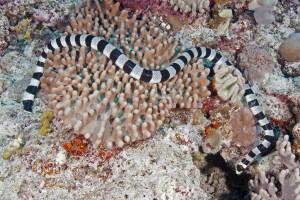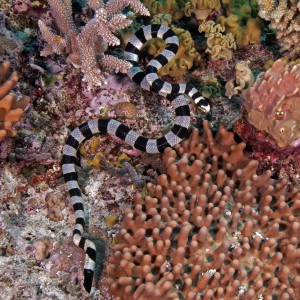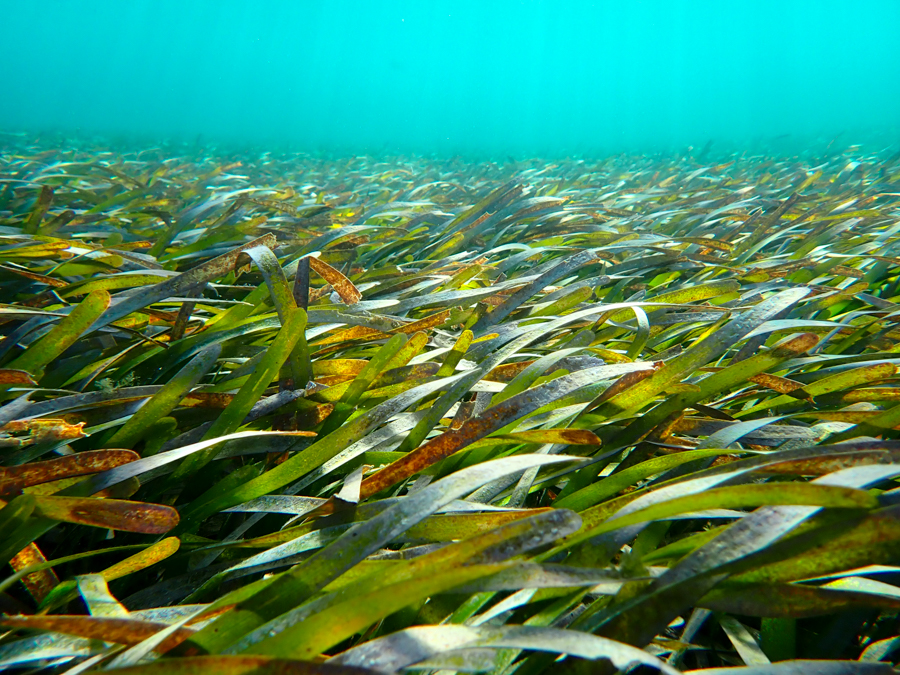On our second day of diving we had our first encounter with a sea snake. While most of the 62 described species are true aquatic snakes, we observed one of the more primitive snakes, banded sea kraits, Laticauda colubrina. This snake is able to live on land or in the ocean. It is found most commonly on shallow coral reefs and mangroves, but comes to land every 10 days or so, usually at night, to digest its food, engage in courtship, lay eggs, and slough its skin. In Tonga, it can be found on sandy beaches, in crevices and caves on coral islands, and in low hanging trees.
Sea kraits have many adaptations that has allowed them to flourish in the marine environment. Although they must come to land to drink fresh water, they have a salt gland under their tongue which is used to expel excess salt. When in the water, their nasal valves and scales surrounding their mouth act as a seal preventing them from taking in water. Paddle shaped tails provide propulsion. Their lungs are unusually large, enabling them to spend from 15-30 minutes to almost two hours underwater. Unlike other reptiles, they satisfy up to 25% of its oxygen requirements by respiring through their skin and can also eliminate all of their carbon dioxide in this manner. Sea kraits also have paddle-like tails and an eel-like compressed body that helps them swim.
Sea kraits: This is the banded sea krait, Laticauda colubrina
Sea kraits we observed were hunting for prey, probing for small-bodied fish in crevices and under coral heads. Although sea snakes are among the most venomous of all snakes, being 10 times more toxic than a rattlesnake, this one seemed fairly docile, paying little attention to us. We kept our distance though, as one snake produces 10-15 mg of venom, only a fraction of which is a lethal dose.
Sea krait, Laticauda colubrina
Video: Andrew Bruckner
Photos: 1-2 Ken Marks




